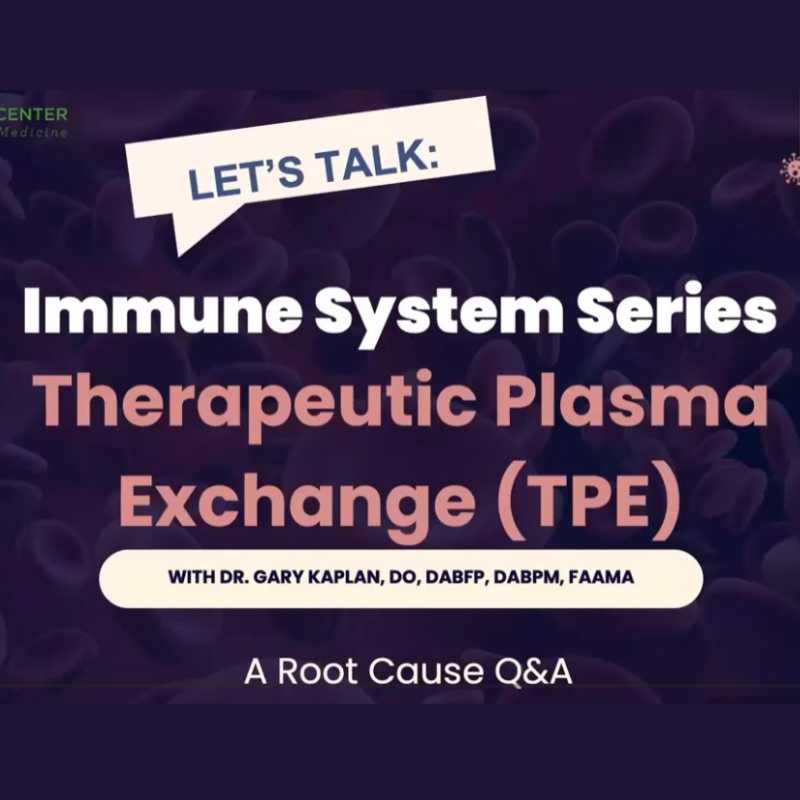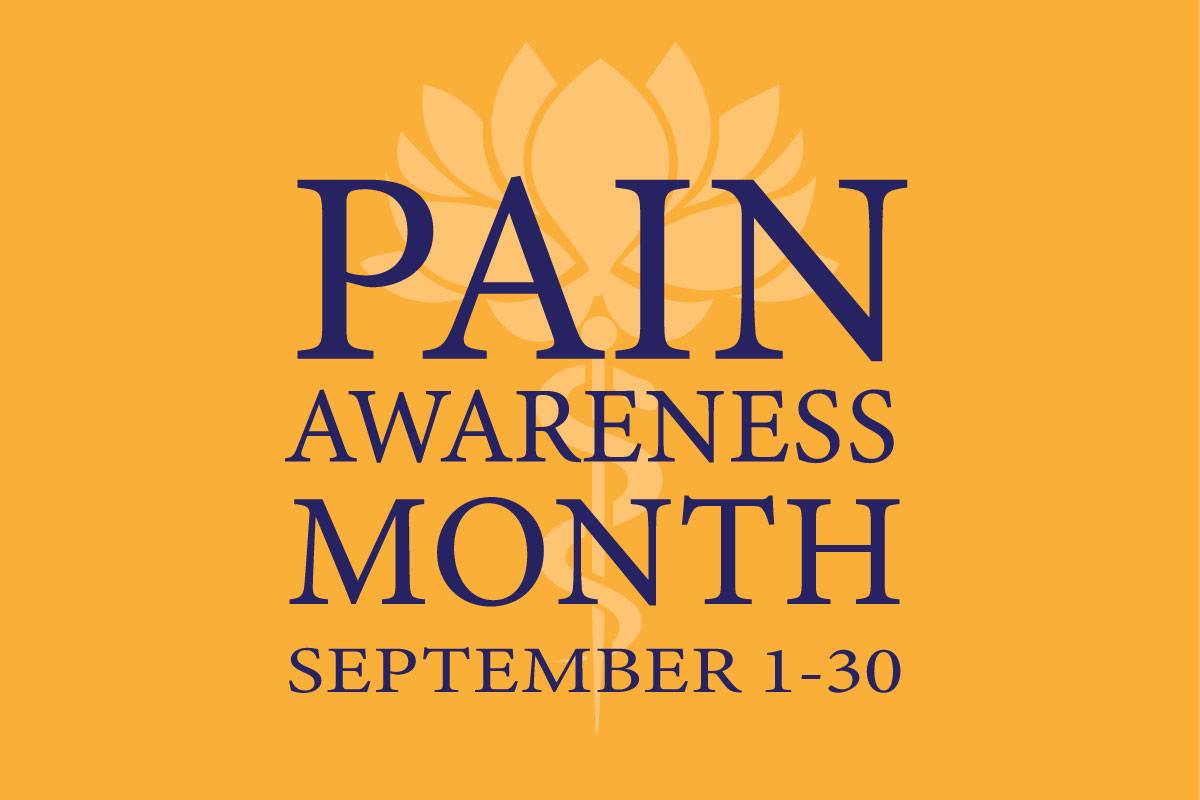
5 Ways We Can Keep Your Immune System Strong
December 10, 2025/by Kaplan Center
Want to Take Your Workout to the Next Level Next Year? These Tips Can Help
December 8, 2025/by Kaplan Center
Dr. Kaplan’s Dos and Don’ts of the Holiday Season
December 3, 2025/by Kaplan Center
Let’s Talk Webinar – A Root Cause Q&A
December 2, 2025/by Kaplan Center
Navigating Holiday Meals with Gut Issues: Simple Tips for a Comfortable Season
December 1, 2025/by Chardonée Donald, MS, CBHS, CHN, CNS, LDN
Craniosacral Therapy for TMJ | Say Goodbye to the Daily Grind
November 19, 2025/by Patricia Alomar, M.S., P.T.
From Compassionate Care to Personal Healing: A Letter to My Patients
November 18, 2025/by Kaplan Center
8 Steps to a Healthier Gut—and a Longer, Healthier Life
November 18, 2025/by Kaplan Center
Mid-Life Irritability & Fatigue Improved by Hormonal Balancing
November 13, 2025/by Lisa Lilienfield, MD
From Challenges to Change: Dr. Kaplan on Healthcare’s Biggest Challenges
October 29, 2025/by Kaplan Center
Overlooked Dangers of Mold Exposure and How to Stay Safe – Dr. Kaplan Talks to WUSA9
October 27, 2025/by Kaplan Center
Let’s ‘Fall’ Into Wellness: A Nutritionist-Approved Immune-Boosting Recipe for Cold and Flu Season
October 13, 2025/by Chardonée Donald, MS, CBHS, CHN, CNS, LDN
PANS/PANDAS – When Sudden Symptoms Signal Something More
October 9, 2025/by Kaplan Center
Beating Burnout, A Nutritionist’s Perspective
October 1, 2025/by Chardonée Donald, MS, CBHS, CHN, CNS, LDN
3 Things That Can Happen After Stopping GLP-1s
September 11, 2025/by Chardonée Donald, MS, CBHS, CHN, CNS, LDN
What Families Need to Know About COVID and Flu Season
September 3, 2025/by Kaplan Center
September is Pain Awareness Month
September 1, 2025/by Kaplan Center
Dr. Kaplan Spoke to Northern Virginia Magazine About COVID, Flu, and Immunity — Here’s What You Should Know
August 14, 2025/by Kaplan Center
“Why Do I Feel Like Crap?”: The Overlap Between Long COVID and Perimenopause
July 30, 2025/by Kaplan Center
Why People Are Turning to EMDR (and Why You Might Want to Too)
July 23, 2025/by Kaplan CenterAre you looking to improve your overall wellness?
Personalized care you can trust.
Our integrative, non-surgical treatment approach is highly successful in maintaining wellness and also treating chronic pain and illness. For more than 30 years, we have delivered superior, cutting-edge health care in the Washington, DC area.
QuickLinks
Contact Information
Tel: 703-532-4892
Fax: 703-237-3105
6829 Elm Street, Suite 300
McLean, Virginia 22101
Map It
Hours of Operation
Mon – Thu : 8 am – 5 pm, ET
Fri : 8 am – 12 pm, ET
Does Raw Kale Interfere with Calcium Absorption?
/in Bone Health, Nutrition/by Kaplan CenterCalcium is the most abundant mineral found in the body. We need it to not only make sure our bones stay strong and healthy as we age, but to also maintain the proper functioning of the heart, muscles, and nerves. Green smoothies and protein shakes containing calcium-rich leafy greens have become a popular and easy way to incorporate this essential nutrient into our diets. However, in certain cases it comes with a caveat. Some leafy greens like kale, chard, beet greens and spinach contain oxalic acid, which is a type of antinutrient that binds with calcium and reduces its absorption in the intestines. In addition to the greens listed above, oxalic acid is also found in some legumes and grains.
Does this mean you should not add kale or other greens that contain oxalic acid to your smoothies? Not necessarily. In their raw form, these greens should not be considered a good source of calcium. However, by cooking or steaming these vegetables you can significantly reduce the amount of oxalic acid present, which will help with calcium absorption (make sure to drain your greens thoroughly as the oxalates go into the water).
Have you always wanted to work with a nutritionist? If you’re ready to optimize your diet for better health and overall wellness, give us a call today at 703-532-4892.
Have questions before you make an appointment? No problem! Give us a call and speak with an experienced nurse; we’re here to help you.
One suggestion would be to precook your leafy greens and store them in the freezer (in individual portions) for quick access. When you’re ready to make your smoothie, just grab a portion and throw it in! Cooked and drained, kale is also a great addition to soups, stews, and even pizza! Other methods to reduce their antinutrient content include sprouting and fermenting.
Another suggestion would be to eat foods known to contain oxalic acid 2 hours apart from dietary calcium sources. Doing this will allow enough time for the body to absorb it.
Other foods that will boost the calcium content in your smoothie are unsweetened Greek yogurt (which also contains a good amount of protein) and flax seeds.
Making sure calcium-rich foods are a part of your diet can help avoid a deficiency. If you’re unable to get enough calcium through your diet, supplementation may be recommended. Calcium deficiency can lead to symptoms such as:
If you are experiencing symptoms or need general nutritional guidance, we can help. Please give us a call at 703-532-4892. We’re here to help you get to the root cause of your symptoms so healing can begin.
Additional resources: Foods High in Oxalates
References:
Gupta RK, Gangoliya SS, Singh NK. Reduction of phytic acid and enhancement of bioavailable micronutrients in food grains. J Food Sci Technol. 2015 Feb;52(2):676-84. doi: 10.1007/s13197-013-0978-y. Epub 2013 Apr 24. PMID: 25694676; PMCID: PMC4325021.
M. López-Moreno, M. Garcés-Rimón, M. Miguel, Antinutrients: Lectins, goitrogens, phytates and oxalates, friends or foe? Journal of Functional Foods, Volume 89, 2022, 104938, ISSN 1756-4646, https://doi.org/10.1016/j.jff.2022.104938.
WEAVER, C.M., HEANEY, R.P., NICKEL, K.P. and PACKARD, P.I. (1997), Calcium Bioavailability from High Oxalate Vegetables: Chinese Vegetables, Sweet Potatoes and Rhubarb. Journal of Food Science, 62: 524-525. https://doi.org/10.1111/j.1365-2621.1997.tb04421.x
This article was updated in January, 2024.
RECIPE eBOOK:
Recipes for Good Health
DOWNLOAD THE eBOOK NOW!
What to Eat and What to Avoid If You Get Migraine Headaches
/in Conditions, Migraine, Nutrition/by Gary Kaplan, DOMigraines are far more than just a bad headache. Experts believe migraine headaches are caused by abnormal brain activity, including dilation and constriction of the blood vessels within the brain. An attack can last from several hours to several days and affects a person’s ability to function at home and at work. A migraine can generate feelings of nausea, vomiting, sensitivity to light and sound, throbbing head pain, aura, and visual distortion, causing a person to want to withdraw and seek immediate relief. If you have never experienced a migraine headache, consider yourself lucky, but for those who do, finding a way to manage the pain and lessen the frequency is a top priority.
Knowing what triggers your migraine headaches is the best defense in avoiding them, especially since triggers can be cumulative. While there are a number of potential causes of a migraine – including hormones, stress, weather, medications, and environmental factors – for many, dietary triggers are a major contributor. Keeping a detailed journal for several weeks may sound tedious, but the effort you put in will be well worth it. With some careful recording, a pattern should be detected. Doing this, along with a thorough physical exam to look for possible nutritional deficiencies (migraine sufferers tend to be deficient in magnesium, vitamin B (riboflavin), vitamin D, and CoQ10), and a detailed discussion with your physician or migraine specialist will put you well on your way to regaining the quality of life you have lost.
When considering how you can reshape your diet to improve migraine symptoms, the bottom line is to eat fresh, not processed, food. The more work that goes into preparing foods for the consumer, the more likely it is that it will have an additive that may be a trigger for you. In general, the following food guidelines will benefit most migraine sufferers.
Questions? Give Us a Call!
703-532-4892 x2
What to Eat
Halibut, mackerel, and salmon
Opt for the fattier fishes at the grocery store to make sure you are getting enough omega-3 fatty acids. Diets high in omega-3s and low in omega-6s have been found to lessen the frequency and occurrence of migraine headaches,
Cashews, almonds, and pumpkin seeds
Because of their high magnesium content, cashews, almonds, and pumpkin seeds are the nuts to turn to if you suffer from migraines. Aim for 1 ounce per day.
Steel-cut oatmeal
Drops in blood sugar can be a trigger for many migraine sufferers. To maintain steady blood-sugar levels, eat foods with a low-glycemic index, like steel-cut oatmeal and oat bran.
Popeye ate it for energy and iron, but migraine sufferers will appreciate spinach for its high folic acid (B9) content. A 2024 study folate’s relationship with the frequency of migraine found that participants who increased their intake of folic acid experienced an improvement in their migraine symptoms. A review of 11 studies regarding the role of vitamin-B supplementation to treat migraines found it to be an effective treatment for adults, with few side effects. Other dietary sources of vitamin B include mushrooms, asparagus, and eggs.
Incidentally, spinach is also high in magnesium, doubling its migraine-fighting properties. Whether it’s steamed, fresh, or sautéed, try adding a spinach dish to the menu once a week!
Water
Staying hydrated is one of the most important things you can do for your body in general, and you’ll see that it will help with migraines too. Eight glasses of water each day is recommended, but if you consistently miss that mark make sure to snack on foods with high water content, like cucumbers, apples, and pears!
What to Avoid
Alcoholic beverages
Red wine, beer, and whiskey, in particular, have been cited in numerous studies to be triggers for migraines. Alcohol is the most frequently reported trigger by those suffering from migraines, with most studies finding a prevalence rate between 29 and 36 percent.
Baked goods
Wheat flour, found in most traditional baked goods, contains the protein gluten. If you are sensitive to gluten (approximately 6 percent of the population is) or if you have the autoimmune disorder celiac disease (it is suspected that there are more people with undiagnosed celiac disease than diagnosed), even small amounts of gluten can set off an inflammatory response in your body. While celiac disease can be diagnosed through specialized testing by your physician, there are no specific tests for gluten intolerance. Eliminating all gluten from your diet for at least two weeks and monitoring your symptoms is the only reliable way to make the diagnosis of gluten-sensitivity at this time. Along with intestinal problems, neurological presentations—including migraines—are common to both diseases. If you think gluten may be the cause of your migraine, talk to your physician before you adopt a gluten-free diet for a better understanding of how it will affect your overall health.
Processed meats
In order to maximize the shelf life and flavor of processed meats and fish, such as hot dogs, sausages, bacon, deli meats, and smoked fish, manufacturers add the food preservatives sodium nitrate and sodium nitrite. When we consume foods with nitrates and nitrites the result is an increase in nitric oxide, which has been linked to an increase in the occurrence of migraine headaches. Furthermore, a very interesting study found that people whose intestinal microbiome contained a higher level of particular bacteria that facilitates the breakdown of nitrates were more likely to suffer a migraine attack after eating food that contained them.
Aged cheeses
Cheese lovers, beware! Certain aged cheeses, such as blue, Brie, cheddar, provolone, Gorgonzola, and Parmesan all contain tyramine, a naturally occurring substance found in aged and fermented foods that have long been linked to an increase in migraine headaches.
Questions? Give Us a Call!
703-532-4892 x2
MSG
It’s not just in your Chinese food! Monosodium glutamate, which has a long, proven history of causing headaches and migraines, is a flavor enhancer that can be found in food items from marinades and salad dressings to chips, seasonings, even canned tuna! It has so many aliases – natural flavoring, hydrolyzed plant protein, komu extract – that unless you are an expert in food labels, it’s hard to know if you’re eating it or not. The bottom line—if you eat a lot of processed, packaged, or restaurant foods, you’re likely eating a good amount of MSG.
Artificial sweeteners
They are found in beverages, baked goods, candies, and scores of other processed foods, and for many, artificial sweeteners such as aspartame are a migraine trigger.
Citrus fruits
It may surprise you to see citrus fruits on this list, but octopamine, a chemical compound found in certain citrus fruits, can cause migraines with aura for those who are sensitive.
Bottom line
The only way to improve the frequency of migraines is to understand what is causing them. Our providers have years of experience treating patients with chronic migraines and we can help you uncover the root cause of your pain. To speak to an experienced nurse today, please give us a call at 703-532-4892.
Watch now: Dr. Lisa Lilienfield on “The Mystery of Migraines”
Praise for Dr. Kaplan’s book – Why You Are Still Sick: How Infections Can Break Your Immune System & How You Can Recover
“Gary Kaplan is not only a pioneer in his field, he’s a badass who is changing the face of medicine. This book holds everything I wish I knew twenty years ago about autoimmunity. It’s an incredible resource for anyone with chronic pain and illness. It will bring hope and health to so many people.”
– Dave Asprey, founder, Bulletproof 360
References
Finocchi C, Sivori G. Food as trigger and aggravating factor of migraine. Neurol Sci. 2012 May;33 Suppl 1:S77-80. doi: 10.1007/s10072-012-1046-5. PMID: 22644176.
Sun-Edelstein C, Mauskop A. Foods and supplements in the management of migraine headaches. Clin J Pain. 2009 Jun;25(5):446-52. doi: 10.1097/AJP.0b013e31819a6f65. PMID: 19454881.
Haghdoost F, Togha M. Migraine management: Non-pharmacological points for patients and health care professionals. Open Med (Wars). 2022 Nov 23;17(1):1869-1882. doi: 10.1515/med-2022-0598. PMID: 36475060; PMCID: PMC9691984.
Saedisomeolia A, Ashoori M. Riboflavin in Human Health: A Review of Current Evidences. Adv Food Nutr Res. 2018;83:57-81. doi: 10.1016/bs.afnr.2017.11.002. Epub 2018 Feb 2. PMID: 29477226.
Razeghi Jahromi S, Ghorbani Z, Martelletti P, Lampl C, Togha M; School of Advanced Studies of the European Headache Federation (EHF-SAS). Association of diet and headache. J Headache Pain. 2019 Nov 14;20(1):106. doi: 10.1186/s10194-019-1057-1. PMID: 31726975; PMCID: PMC6854770.
Chen YS, Lee HF, Tsai CH, Hsu YY, Fang CJ, Chen CJ, Hung YH, Hu FW. Effect of Vitamin B2 supplementation on migraine prophylaxis: a systematic review and meta-analysis. Nutr Neurosci. 2022 Sep;25(9):1801-1812. doi: 10.1080/1028415X.2021.1904542. Epub 2021 Mar 29. PMID: 33779525.
Tian S, Yu X, Wu L, Zheng H, Zhong X, Xie Y, Wu W. Vitamin B6 and folate intake are associated with lower risk of severe headache or migraine in adults: An analysis based on NHANES 1999-2004. Nutr Res. 2024 Jan;121:51-60. doi: 10.1016/j.nutres.2023.11.008. Epub 2023 Nov 15. PMID: 38042023.
Zaeem, Z., Zhou, L. & Dilli, E. Headaches: a Review of the Role of Dietary Factors. Curr Neurol Neurosci Rep 16, 101 (2016). https://doi.org/10.1007/s11910-016-0702-1
Bagdy G, Riba P, Kecskeméti V, Chase D, Juhász G. Headache-type adverse effects of NO donors: vasodilation and beyond. Br J Pharmacol. 2010 May;160(1):20-35. doi: 10.1111/j.1476-5381.2010.00643.x. Epub 2010 Mar 19. PMID: 20331608; PMCID: PMC2860203.
D’Andrea G, Gucciardi A, Leon A. Elusive amines: migraine depends on biochemical abnormalities. Neurol Sci. 2022 Nov;43(11):6299-6304. doi: 10.1007/s10072-022-06241-2. Epub 2022 Jul 16. PMID: 35840874.
We are here for you, and we want to help.
Our goal is to return you to optimal health as soon as possible. To schedule an appointment please call: 703-532-4892 x2
This article was originally published in March, 2017. It was reviewed and updated in Jan 2024.
Employee of the Quarter: Nash Nortey
/in News/by Kaplan CenterNash Nortey, our Medical Assistant Supervisor, has been recognized as Kaplan’s Employee of the Quarter!
Nash has been working with our practice for almost 21 years now. Before arriving at the Kaplan Center, Nash worked as the sole medical assistant (MA) at an OB/GYN office where she did her externship after completing her MA training. Nash’s skills were soon evident and because of her proficiency in training new externs and the vast knowledge she had gained while working there, she was asked to go back to her school of trade to become an instructor before joining the Kaplan Center in 2003. It didn’t take long to see that Nash was going to be a permanent fixture here!
Nash’s ability and desire to learn about what we do, along with her ability to empathize with our patients and treat each person with a high level of professionalism, proved her to be the type of person we wanted to have working within our practice. Due to her amazing blood draw skills and her outgoing personality, she has become a favorite amongst many of our patients. As Medical Assistant Supervisor, Nash is intricately involved with the day to day workflow of clinical staff, including hiring, training and ensuring that there is a high level of competency, communication, and support with our doctors and nurses.
Nash loves being able to help people and being a supportive part of their healing. She loves her work family which makes working here “not work” for her. When she’s not at the Center, Nash enjoys listening to music, dancing, eating, doing makeup, and just being around her friends and family.
Congratulations, Nash, and thank you for all you do!
With all of our best wishes,
The Kaplan Team